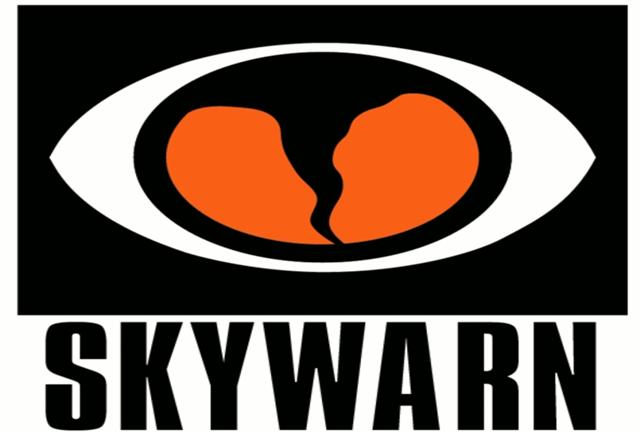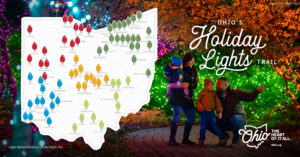National Weather Service offering weather spotter classes in the area

MID OHIO VALLEY – Recently severe storms including a tornado came through Meigs County. With advance warning of the system moving through, no one was injured during the storm. Part of that is due to spotters helping the National Weather Service and area classes are being held for others to participate in the spotter program.
While the National Weather Service employs high tech equipment such as Dual Doppler Radar, Polar Orbiting Satellites and more, during severe weather there is still nothing quite like a human being evaluating what they see. Weather spotters can report on what they see and hear in a way technology can not.
To effectively warn for the protection of life and property, the National Weather Service must have a thorough handle on current weather conditions throughout this region. Unfortunately, long distances separate National Weather Service offices. Although weather satellites and doppler weather radar use the latest technology to provide a wealth of information to forecasters, no tool has yet been developed that can replace a human observation of the weather in a local area at a specific time.
Participanting in the SKYWARNTM spotter program is entirely voluntary, but is valuable to the National Weather Service because participants become the “eyes and ears” of forecasters. While participants are under no obligation and cannot be compensated, the vigilance is valuable. It helps others and could save lives.
A weather spotter is a person who observes significant weather and relays the information to the National Weather Service (NWS) or appropriate local authority, based on the severity and immediate threat of the event observed. Spotters provide an invaluable service to their communities and to the National Weather Service. The information they provide helps their community by assisting local public safety officials in making critical decisions aimed at protecting lives and property. During life-threatening weather events such as tornadoes and flash flooding, these real-time reports from weather spotters are used to help warn others in their community, as well as those neighboring communities which may be in harm’s way.
Spotter reports also help National Weather Service forecasters in the critical decision making process of determining what storms pose a risk to lives and property. The National Weather Service uses these critical reports from storm spotters in combination with radar, satellite, and automated surface observations when issuing Severe Thunderstorm, Tornado, Flash Flood, Winter Storm, and other types of warnings.
The spotter reports become part of the warning decision making process, and is combined with radar data and other information and used by NWS forecasters to decide whether or not to:
- Issue a new warning
- Cancel an existing warning
- Continue a warning
- Issue a warning for the next county
- Change the warning type (from severe thunderstorm to tornado, for example)
In addition to being used in the warning decision making process by National Weather Service forecasters, spotter reports also provide valuable information to people in the path of a potentially deadly storm. Ground truth reports from spotters help to give credibility to the warnings issued by the National Weather Service to those people who are in the path of a potentially damaging or life-threatening storm. This ground-truth information helps motivate people in harms way to take action to protect themselves and their property.
At times, the National Weather Service may call a spotter after a storm has passed, in order to inquire what conditions were like as the storm moved through. This information helps NWS forecasters train for the next big event. Of course, spotters are always encouraged to take the initiative and call the NWS office with their information.
Trainings are going to be held in the region for those wishing to participate as weather spotters. For current spotters, the modules that are to be offered will help refresh training and answer questions. For prospective spotters this training will help prospective spotters understand what the role of the weather spotter is, and understanding the basics of severe weather. Completion of these modules will not make an individual a trained weather spotter for the NWS, but will help when taking the training with the local NWS office. Prospective participants must register for each of these courses through the website. There is no cost.
Upcoming classes are as follows:
Mason County EMA on March 15, 2017 at 5:30 p.m.
Wellston Fire Station 2 on March 21, 2017 at 6:30 p.m.
Ohio University Walter Hall Room 145 on April 13, 2017 at 7 p.m.
For more information about the SKYWARNTM Program or becoming a trained Skywarn Spotter contact the local weather office and ask for the WCM. According to a statement from the NWS of Charleston, West Virginia, “If you live in one of the 49 counties of our forecast area which includes pieces of four state (34 counties in West Virginia, 9 counties in southeast Ohio, 4 counties in northeast Kentucky, and 2 counties in extreme southwest Virginia), you will need to contact John Sikora.”
Sikora may be contacted via email at [email protected] or by phone at 304-746-0180 ext. 238. Additionally, anyone with an amateur radio or civic type group that wants to hold a spotter talk can work with the Emergency Manager for your county, or can contact Sikora, or Jamie Bielinski, [email protected], to set up a class.









